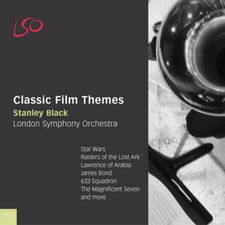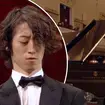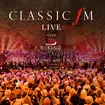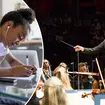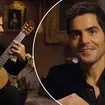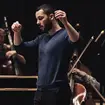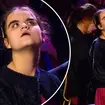The Full Works Concert - Tuesday 13 August: Saint-Saëns
Saint-Saëns is known for Carnival of the Animals and the Organ Symphony - but there's much more to his music than just those two works.
Born in Paris in 1835, Charles-Camille Saint-Saëns showed signs of exceptional musical ability from infancy. He gave his first private concert to an audience at the tender age of five, started seriously composing the following year, and aged 10 had his professional debut with an orchestra playing a Mozart concerto and the first movement of Beethoven’s C minor Concerto.
Best known for The Carnival of the Animals and his Symphony No.3, 'Organ', Saint-Saëns' compositions range from grand opera to intimate chamber works.
The Introduction and Rondo Capriccioso was written in 1863 for the virtuoso violinist Pablo de Sarasate. He was a prodigy who, at the age of just 15, commissioned a piece from Saint-Saëns. It became Saint-Saëns' first violin concerto. Four years later, the composer gave Sarasate the Introduction and Rondo Capriccioso, inspired by Spanish dance music.
The Piano Concerto No.1 in D major was completed in 1858 when Saint-Saëns was 23. It's a bright and energetic work, given a fresh performance tonight by the pianist Pascal Roge with the Philharmonia Orchestra conducted by Charles Dutoit.
The lovely - and technically-demanding - wordless song 'Le Rossignol et la Rose' (The Nightingale and the Rose) is also given a magnificent performance tonight by the soprano Natalie Dessay.
Saint-Saëns' Symphony in F major, despite successful early performances was withdrawn by the composer and remained largely unknown to the audiences of his own time. It is the longest of his symphonic works and is inspired by the city of Rome. It's a powerful and beautiful piece which deserves a wider audience.
Saint-Saëns was the first major composer to write a piece of music exclusively to accompany a motion picture. L'Assassinat du Duc de Guise was an 18-minute long film whose producers were keen to give their films some kudos by employing established stage actors and a big name composer. Saint-Saëns later developed his music into a concert work, the Opus 128 for strings, piano and harmonium.
Saint-Saëns: Introduction and Rondo Capriccioso
Violin: Renaud Capucon
Daniel Harding conducts the German Chamber Orchestra of Bremen
Saint-Saëns: Piano Concerto No.1 in D major
Piano: Pascal Roge
Charles Dutoit conducts the Philharmonia Orchestra
Saint-Saëns: 'Le Rossignol et la Rose'
Soprano: Natalie Dessay
Michael Schonwandt conducts the Berlin Symphony Orchestra
Saint-Saëns: Symphony in F major
Jean Martinon conducts the Orchestre National de L'ORTF
Saint-Saëns: L'Assassinat du Duc de Guise
Ensemble Musique Oblique
